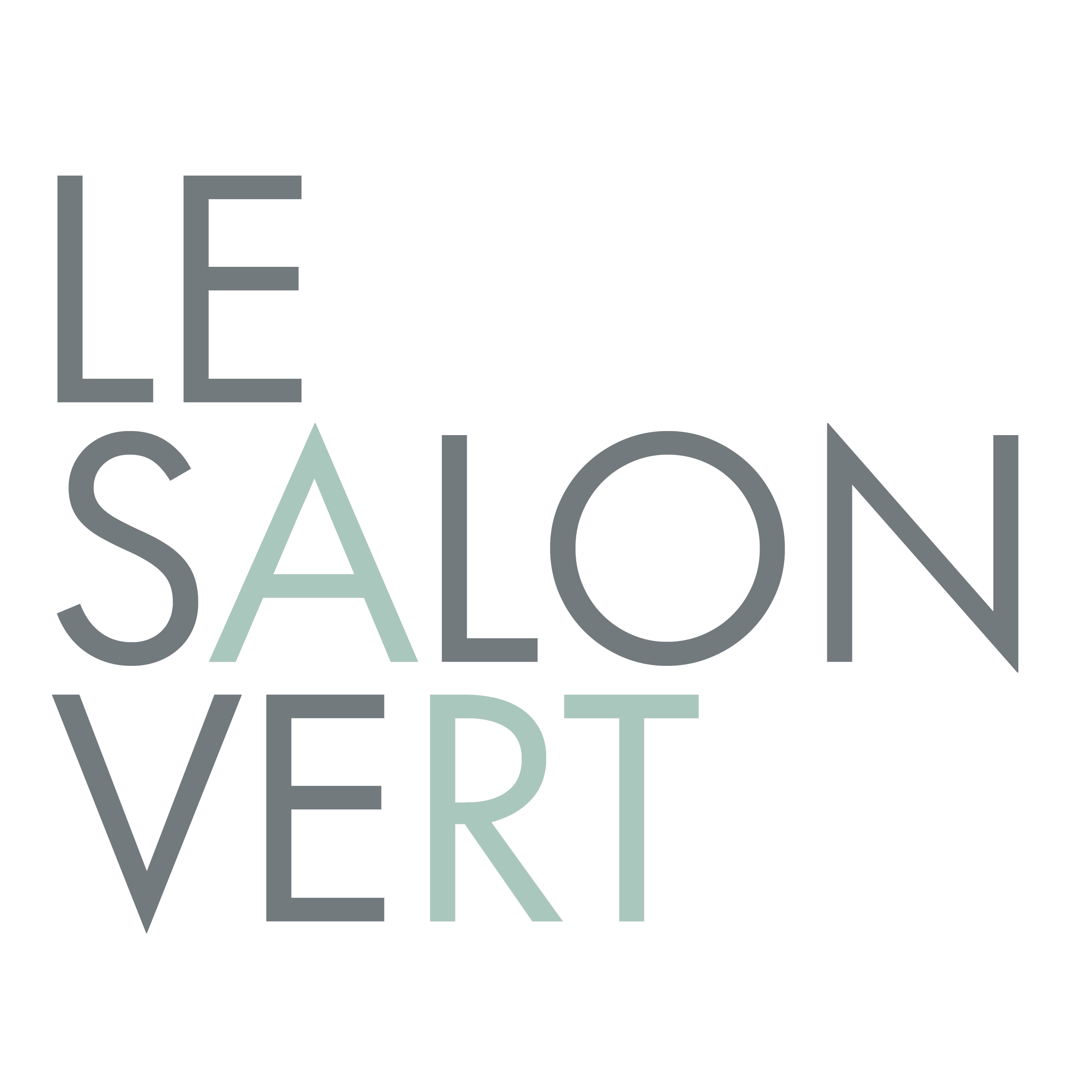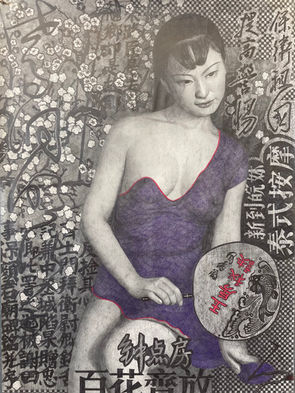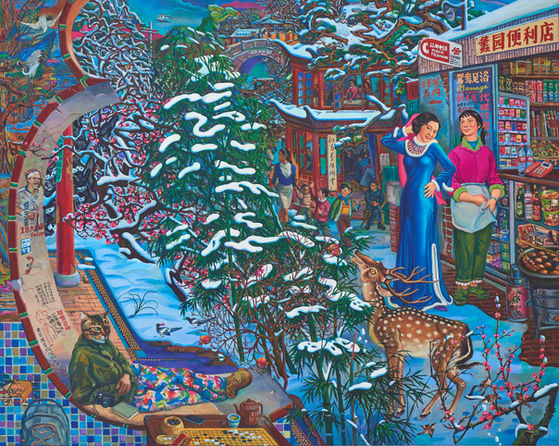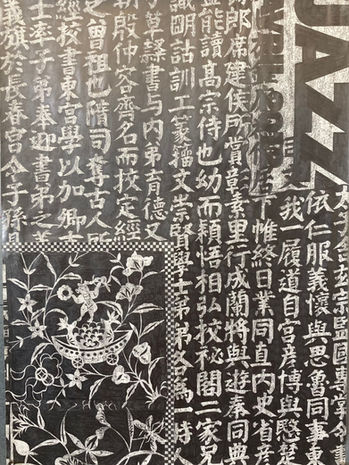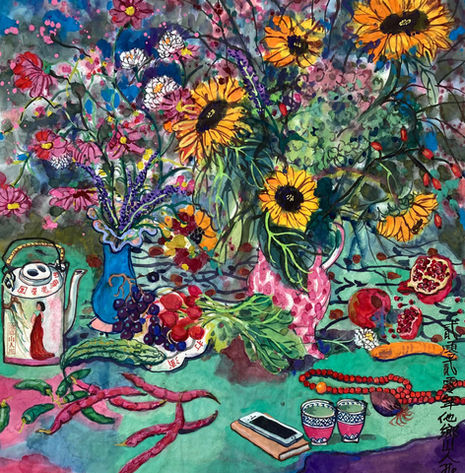Qiu Jie
Jie Qiu became internationally known for his lavish large format graphite drawings. The artist collects the visual advertising material that is constantly surrounding us, anything from catalogs for buying clothes to the labels on packets of spaghetti. Oriented by a certain nostalgia for the country of his birth, his subjects reach him via his life and also by chance. Over several months of time, he then assembles these materials into carefully arranged compositions. He often begins with a magazine photo of a young woman whose pose inspires him to place her in a decorative scheme he designs just for her.
He describes these magazine models as actresses that he can situate into rooms like a stage director. His lines are so precise that it seems like he might be working with live models. All the details of the visual elements he selects to create his images are depicted with incredible care, all the way down to a tiny packet of cigarettes in a corner of the scene showing an existing brand name. He uses the technique of parallel perspective, meaning that the objects he uses in the background are simply smaller. This makes the details of the background more precisely visible than in real life: which is what gives the overall impression of a superimposition of flat decor, of a two-dimensional scenography. Mixing visual elements of Western and Chinese pop culture, the scenes feel strangely familiar while also offering a mysterious narrative.
Jie Qiu was born in Shanghai in 1961. He began his studies at the age of 17 at the Shanghai Art and Design Academy, and afterward went on to work for six years as a graphic artist and decorator for a government-owned company. Following a noteworthy first exhibition at the Xu Hui Cultural Palace, he was granted the opportunity to study at the Geneva University of Art and Design in 1989. He moved to Switzerland at that point and finished his studies, in multimedia, in 1994. That same year he received the First Prize in Arts Visuels from Geneva’s Prix de la Société des Arts, then the Prix Fédéral des Beaux-Arts in 1995, a studio grant from the city of Geneva in 1996 and finally the Simon I. Patino Grant from La Cité des Arts de Paris. Since then, he has exhibited both collectively and individually in numerous places in Europe and Asia: Switzerland, United Kingdom, France, Italy, China, Taiwan, Singapore, and South Korea.
Exhibitions:

